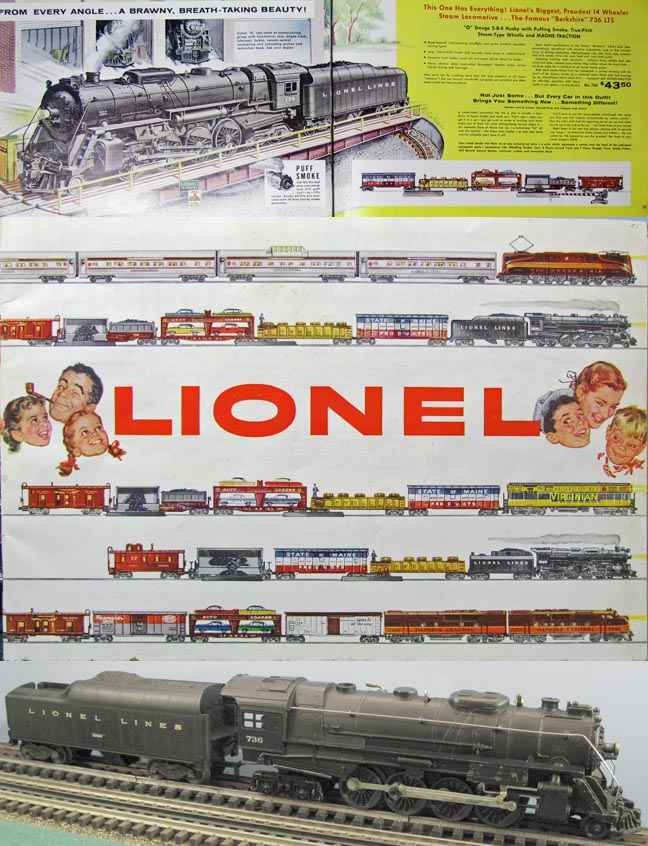Lionel pw-736-3
736 2-8-4 BERKSHIRE STEAM LOCOMOTIVE WITH 2046W TENDER - BUILT FROM 1955 UNTIL 1957
| One of Lionel's premium steam locomotive offerings, the 736 2-8-4 Berkshire was available in five different variations from 1950 through to 1968 (excluding 1952 because of the Korean U.N. conflict). The prototype Berkshires were known for their superior ability to climb mountains. The first ones were built by the Lima Locomotive Works in 1924, and operated on the Boston and Albany. They were given the nickname "Berkshire" because of how well they handled that mountain range for the B&A, especially compared to the USRA 2-8-2 "Mikados" that were in use at the time. Subsequently, hundreds of these giants were built for dozens of railroads across the United States, the last of them hitting the rails in 1949. Some of the largest fleets of Berkshires were on the Erie Railroad (105), the Chesapeake and Ohio (90), the Nickel Plate (80) and the B&A (55). Probably the most famous Berkshire is the Pere Marquette's #1225 - the engine featured in the 2004 movie "The Polar Express". This version of the Berkshire was the third variation of the 736 that Lionel made, and was available in 1955 through to the middle of 1957. It always came with a #2046W Lionel Lines eight wheel tender. The numbers on each side of the cab and the tender lettering are heat-stamped in white. It has an ornamental whistle and bell, as well as wire handrails running down both sides of the boiler. The front of the boiler is on hinges and can be opened to change the headlight bulb. It also has a full compliment of driving rods connecting spoked drivers. A big change that was made on this variation was that the trailing truck - which up until this point was diecast - was replaced with a sheet metal one with plastic on the outside, similar to the one found on the new 685 Hudson. This engine features a powerful Pullmor motor, Magnetraction, three position electronic reverse unit, operating smoke unit, headlight, and a whistle in the tender. There are several small factors that changed over the years which can be used to identify the different versions. The main ones are whether the trailing truck is plastic or diecast, numbering heat- stamped or rubber-stamped, and one or two screws used to mount the pick up assembly. This is the version with plastic-sheathed trailing truck and pick up assembly mounted with two screws. |
![]()
To Research Other Lionel Items in Our Research Library,
Click Your Browser's Back Button
Return to the Train-Station.com Home Page
![]()
